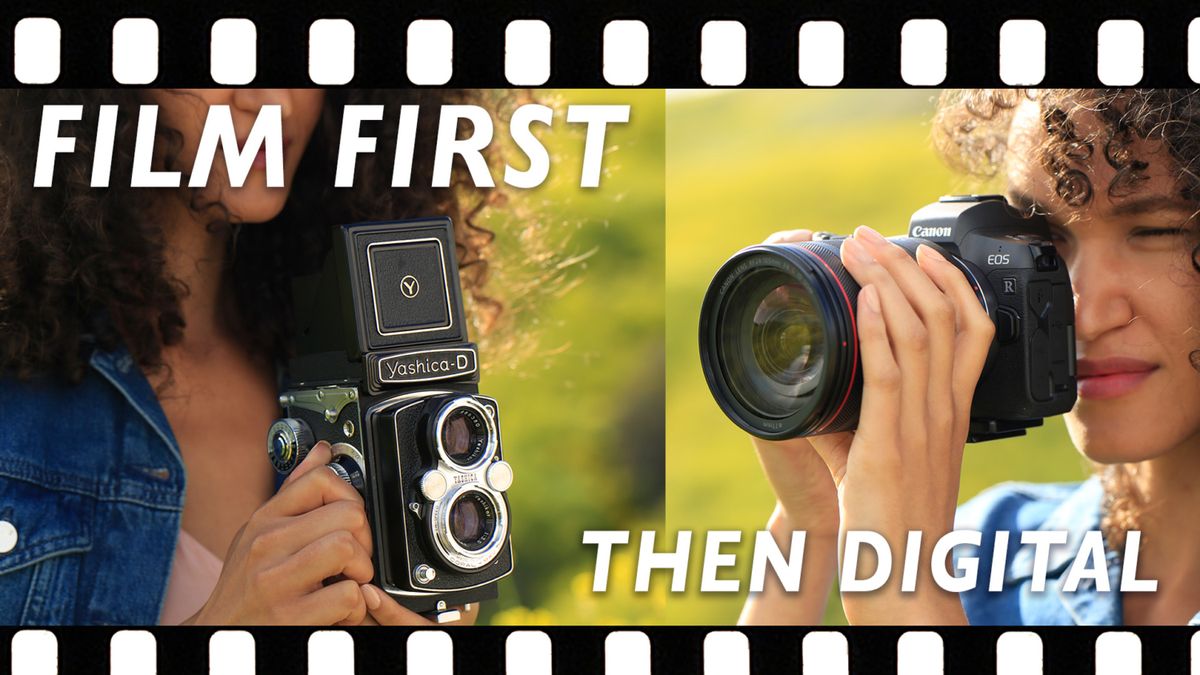
We are going to talk about why starting with film is the best possible way to learn the settings on your camera before getting into the automatic digital world that will swallow you whole as a photographer and puke you out the other way.
As always we got our film processed and scanned by Richard Photo Lab. We have our model Cleo King here and she’s going to help us demonstrate how to properly use our film camera settings.
1. Learning to Shoot on Manual
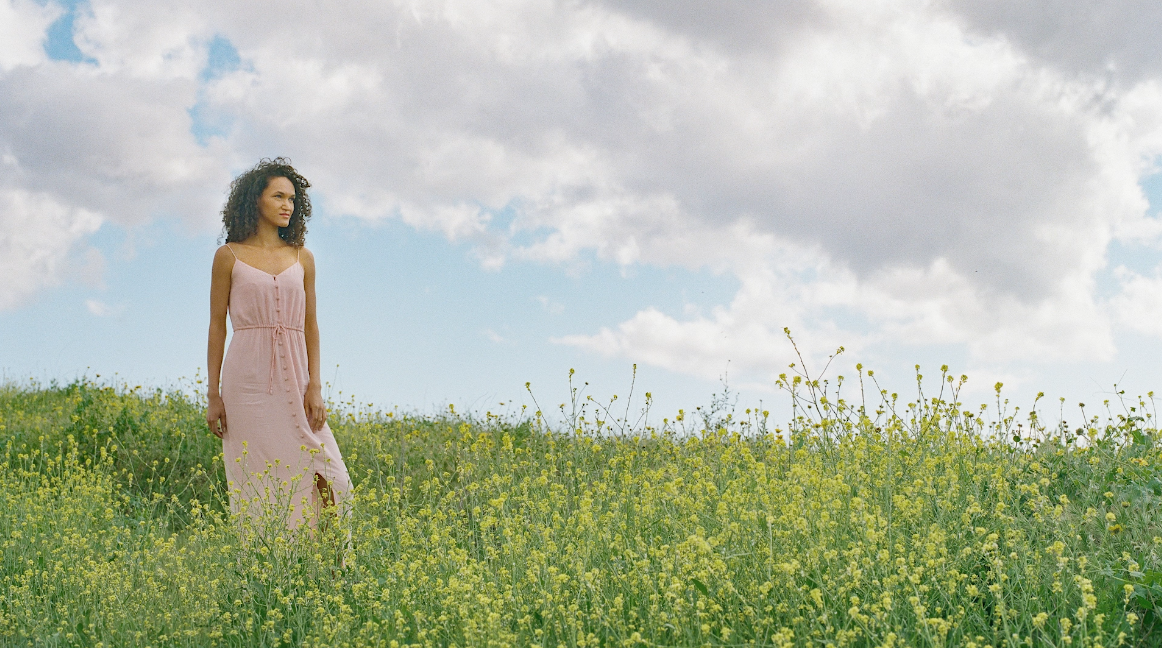 We aren’t going to be using the Program mode or the aperture mode, but instead, we are shooting in manual. So how much depth of field do I want with my image, what do I want to choose as my shutter speed. If you are starting off with photography, it’s going to take some time for you to get used to figuring out which settings capture motion or movement the best. The key is to go through a couple of rolls of film to test and see what different apertures and shutter speeds look like in different scenarios.
We aren’t going to be using the Program mode or the aperture mode, but instead, we are shooting in manual. So how much depth of field do I want with my image, what do I want to choose as my shutter speed. If you are starting off with photography, it’s going to take some time for you to get used to figuring out which settings capture motion or movement the best. The key is to go through a couple of rolls of film to test and see what different apertures and shutter speeds look like in different scenarios.
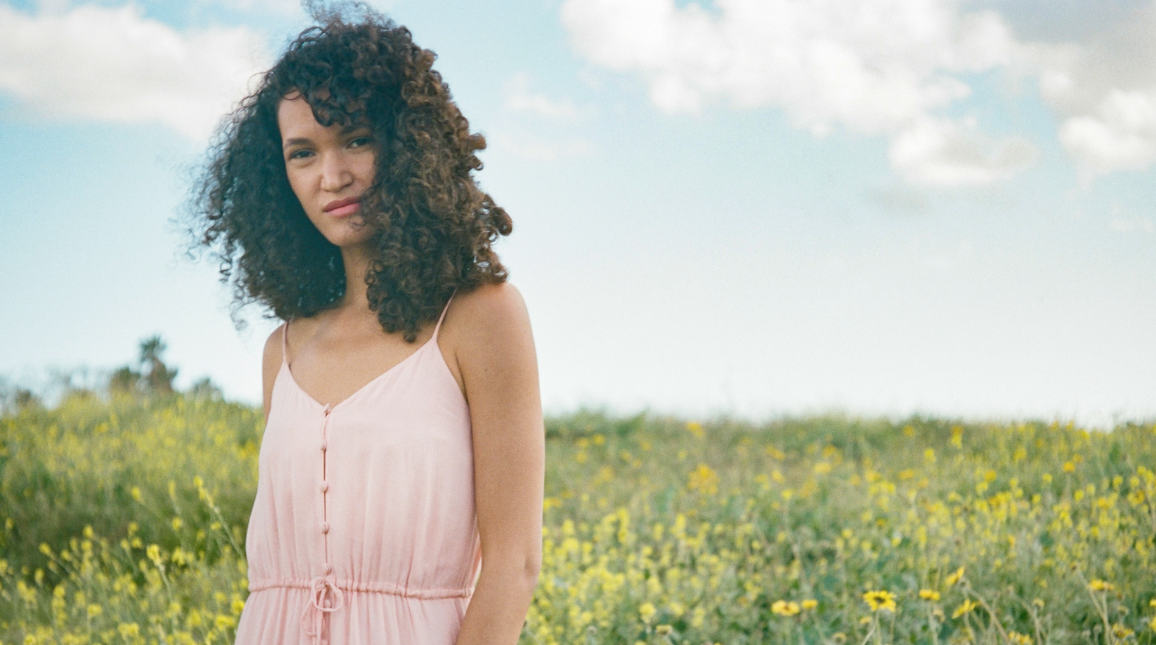 *Be sure to take make notes for each of your exposures. With each roll of film that you shoot, you can look back on your notes and see what you liked or what you want to change.
*Be sure to take make notes for each of your exposures. With each roll of film that you shoot, you can look back on your notes and see what you liked or what you want to change.
2. Proper Light Meter Readings
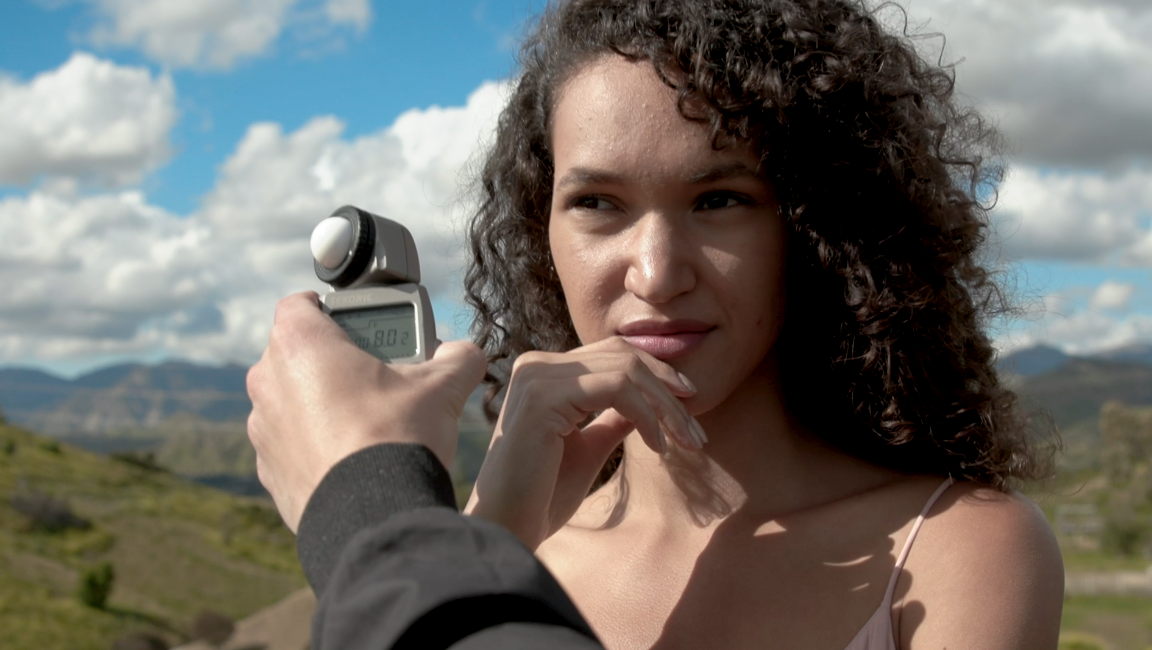 First, you want to take a meter reading, so you can adjust your ISO properly. We are going to be shooting with 400-speed film, but we are shooting it at 200. This helps gives us a healthy dense negative. It’s important to use a light meter even for digital because it appropriately reads the amount of light in a scene.
First, you want to take a meter reading, so you can adjust your ISO properly. We are going to be shooting with 400-speed film, but we are shooting it at 200. This helps gives us a healthy dense negative. It’s important to use a light meter even for digital because it appropriately reads the amount of light in a scene.
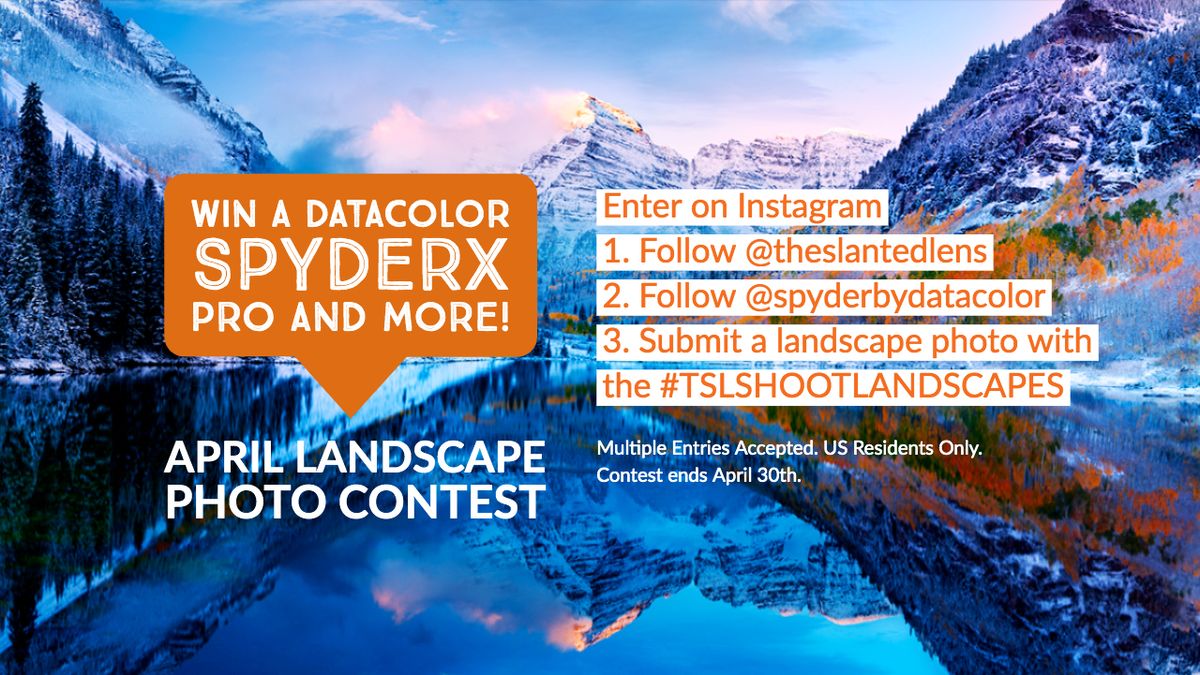 Even when I shoot a photo and look at the LCD screen, I can think that it’s too bright or too dark. However, there are a lot of factors that can affect the image on the screen, from the light hitting the sensor to how bright your LCD is to how bright it is outside and how adjusted your eyes are to that. So there are a lot of things that can go without using a light meter.
Even when I shoot a photo and look at the LCD screen, I can think that it’s too bright or too dark. However, there are a lot of factors that can affect the image on the screen, from the light hitting the sensor to how bright your LCD is to how bright it is outside and how adjusted your eyes are to that. So there are a lot of things that can go without using a light meter.
3. Intentional Compositions
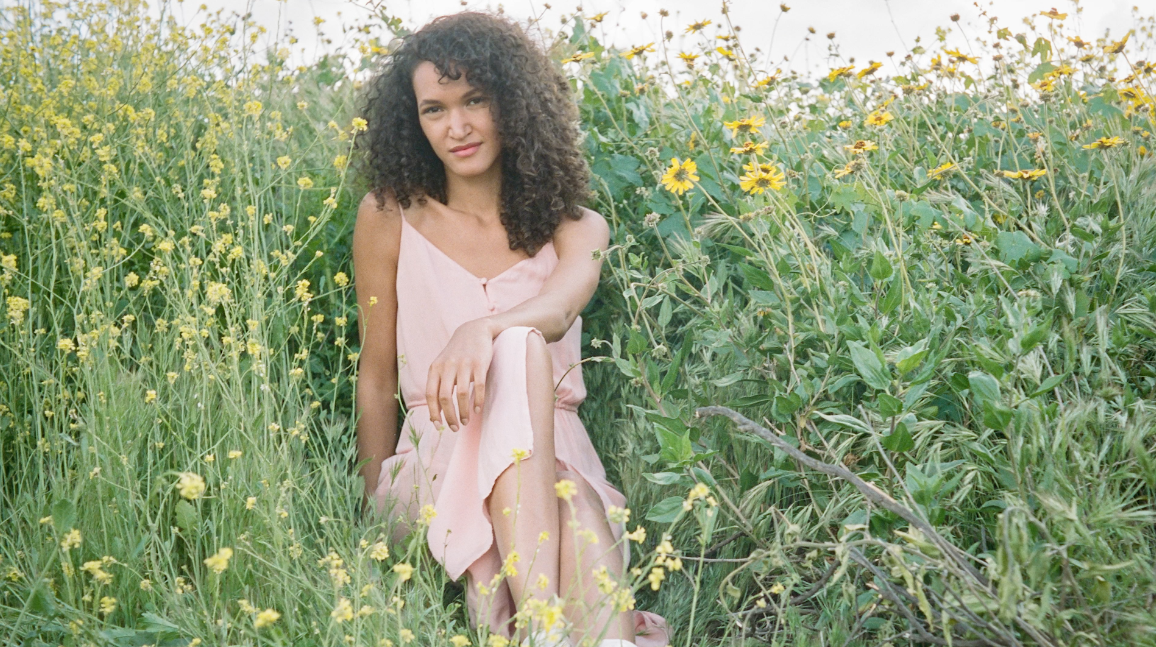 The thing about shooting with film and not digital is that it makes you stop and think and compose. It makes it a much more deliberate process because of the limited number of exposures you have. It causes you to think about the design of the frame and how you want your model to pose. Instead of just shooting endless photos, you can become a much more craft-oriented photographer by taking time and effort to make each photo count.
The thing about shooting with film and not digital is that it makes you stop and think and compose. It makes it a much more deliberate process because of the limited number of exposures you have. It causes you to think about the design of the frame and how you want your model to pose. Instead of just shooting endless photos, you can become a much more craft-oriented photographer by taking time and effort to make each photo count.
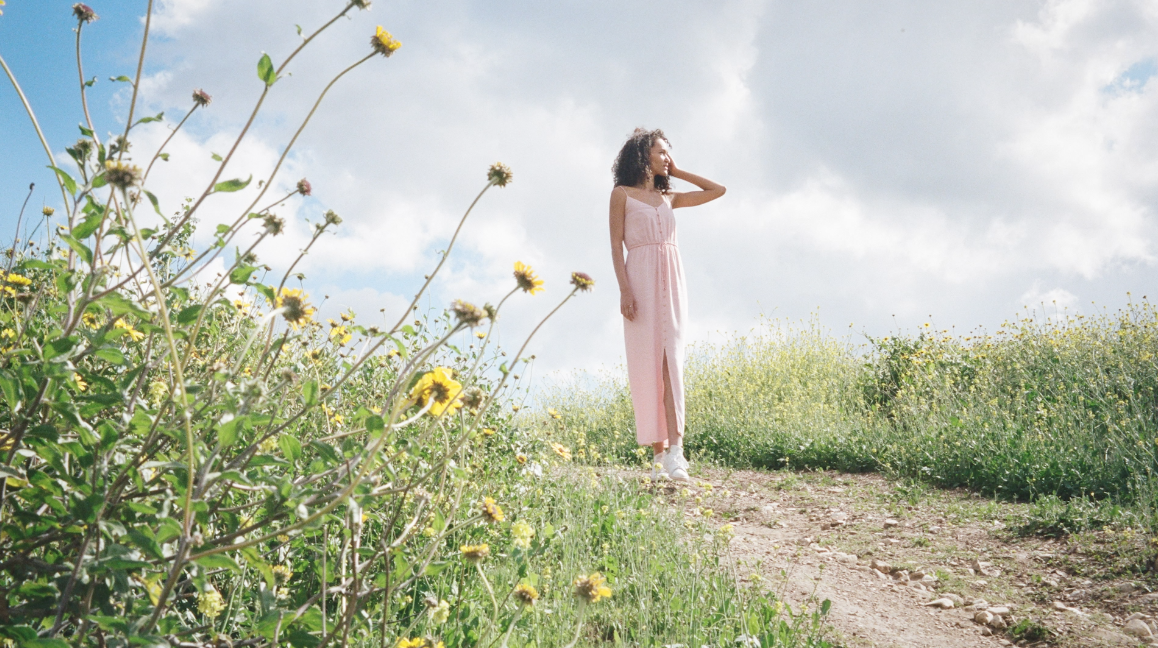 Now you could do this on a digital camera, but film helps you to become a much more disciplined in learning all these basics tools and techniques.
Now you could do this on a digital camera, but film helps you to become a much more disciplined in learning all these basics tools and techniques.
Beginning Film Camera Gear
So let’s talk about some film equipment that’s best for beginners.
Cameras
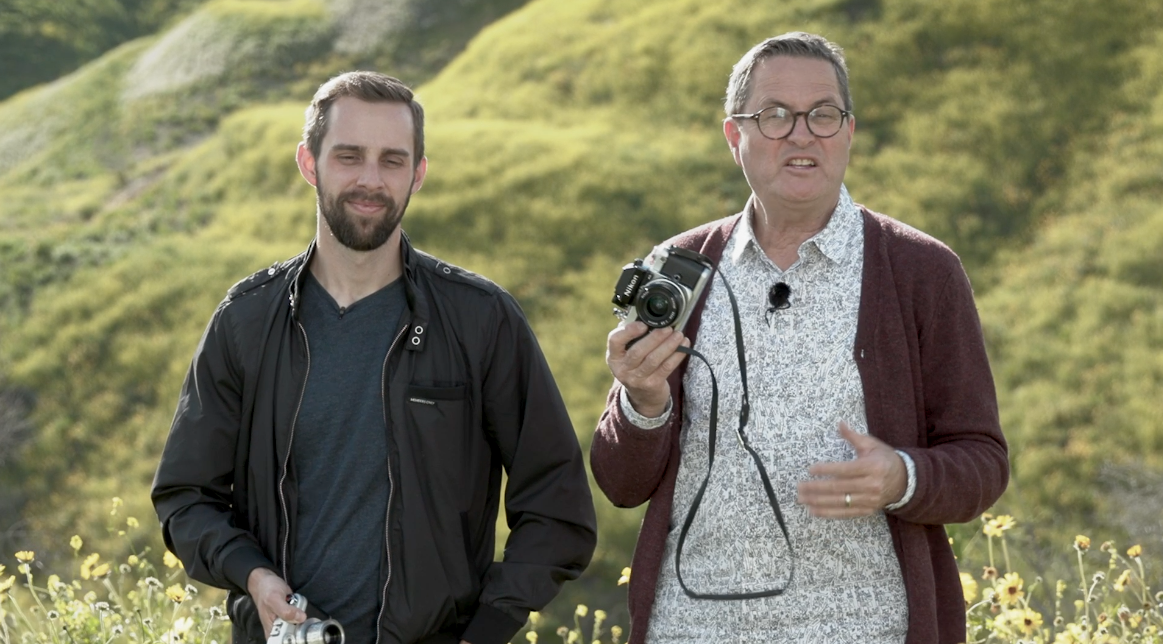 I’m shooting with a Nikon F2 that goes for about $100-$200, which is pretty expensive if you just want to learn some basics. Kenneth is shooting with an Argus which is a lot cheaper.
I’m shooting with a Nikon F2 that goes for about $100-$200, which is pretty expensive if you just want to learn some basics. Kenneth is shooting with an Argus which is a lot cheaper. 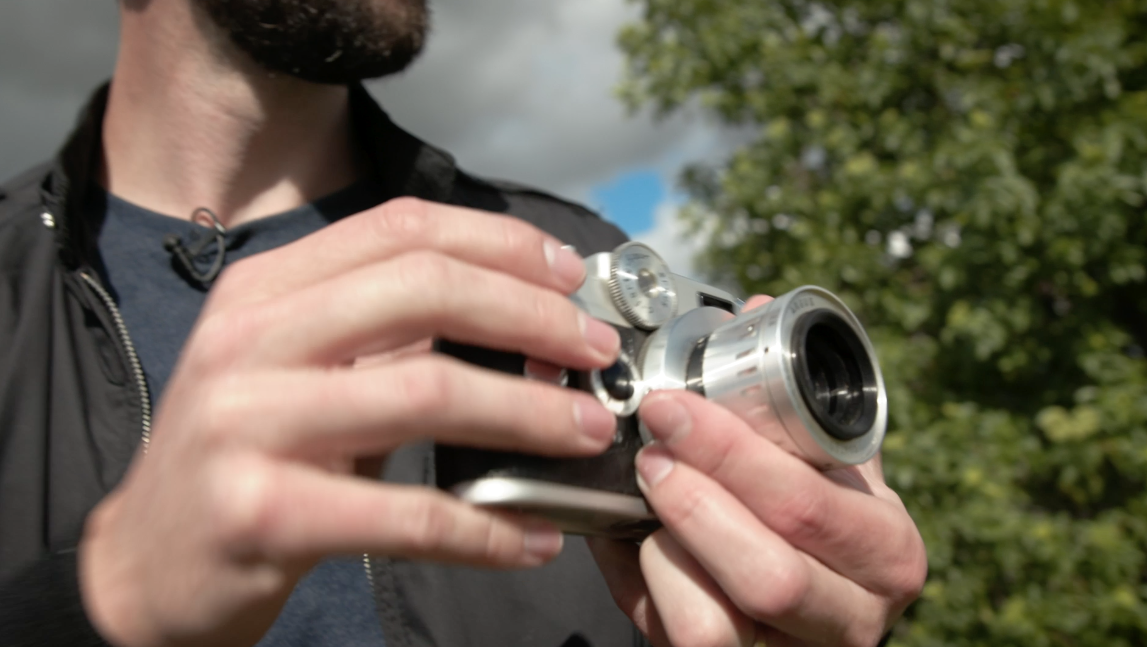 I personally wouldn’t recommend this because the fastest shutter speed is 1/300th of a second.
I personally wouldn’t recommend this because the fastest shutter speed is 1/300th of a second.
Canon AE-1’s are a classic film camera. They go for around $100 and they are great to start with. I started with a Minolta XD-11 or something similar, and I got it for under $100. As long as it works properly and has all the settings. I would recommend going to KEH.com for more inexpensive and affordable used film cameras. They are a little bit more than eBay, but definitely a reliable source to get used equipment.
Film Stock
Film to shoot is very easy. If you have a Portra 400, shoot it at 200 is the best place to start. Fuji 400H is also a great film to start with, but I personally like the Portra 400 more. The best way to start is to go through each aperture, shoot at f2.8 to f4 to f8, so you can see the difference in each setting. This allows you to see the depth of field.
Lenses
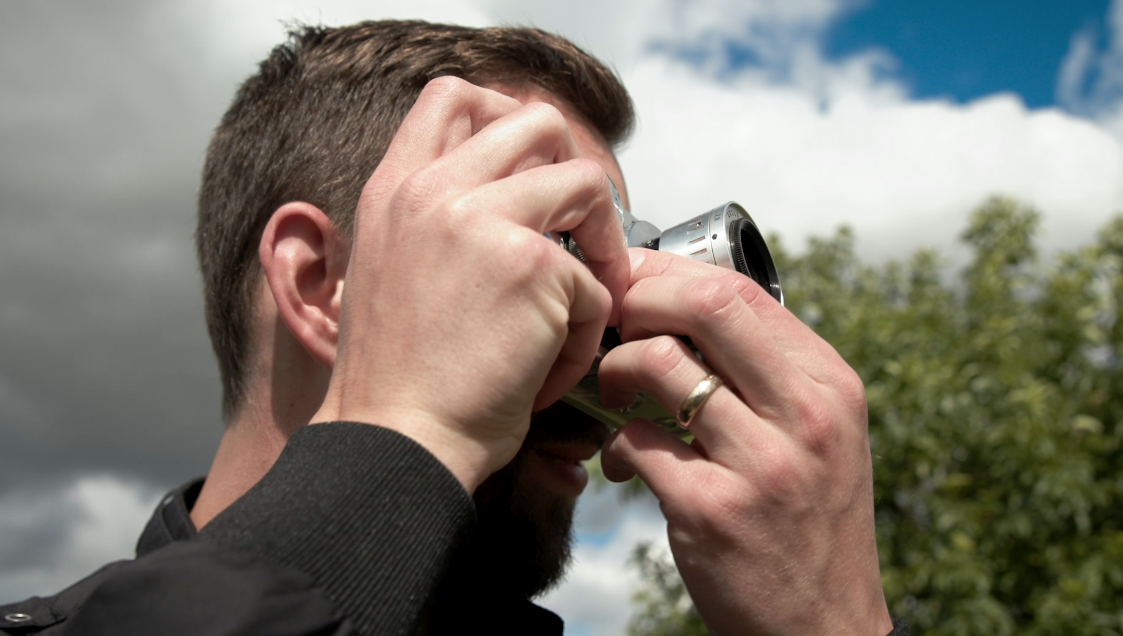 For the first lens, I would recommend a 50mm or a 35mm. 50mm is a good start and it’s close to what your eye sees in terms of depth. This is a very basic film training video to give you the tools to be able to shoot. So get out there and make it happen!
For the first lens, I would recommend a 50mm or a 35mm. 50mm is a good start and it’s close to what your eye sees in terms of depth. This is a very basic film training video to give you the tools to be able to shoot. So get out there and make it happen!
As always we got our film processed and scanned by Richard Photo Lab.
Tag us in your photos #goshootfilm
Shop Jay P’s Gear: https://www.amazon.com/shop/theslantedlens
Jay P’s Gear @ B&H: https://bhpho.to/2ES90Eb
Gear Used:
Nikon F2: https://amzn.to/2HUNgJC
Argus: https://amzn.to/2HXC3I6
Portra 400
B&H: https://bhpho.to/2U98t8W
Amazon: https://amzn.to/2WIZGHQ
Fuji 400H
B&H: https://bhpho.to/2HVYcnc
Amazon: https://amzn.to/2I9h5p8
Canon C200
B&H: https://bhpho.to/2Crtkr8
Amazon: https://amzn.to/2XrbPCn
A7rIII
B&H: https://bhpho.to/2DZYHut
Amazon: https://amzn.to/2T1p51V